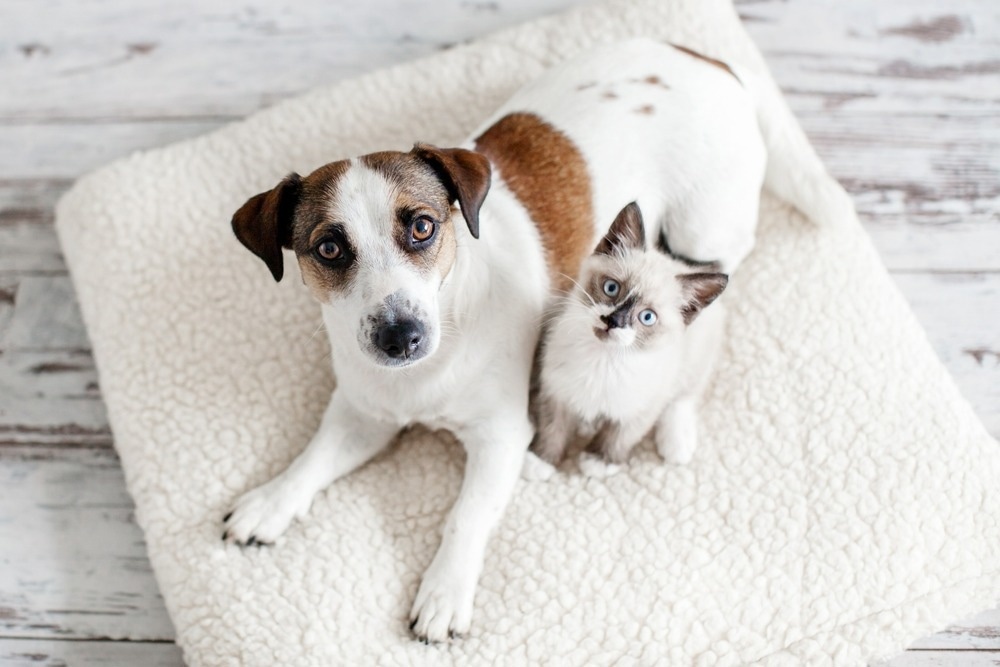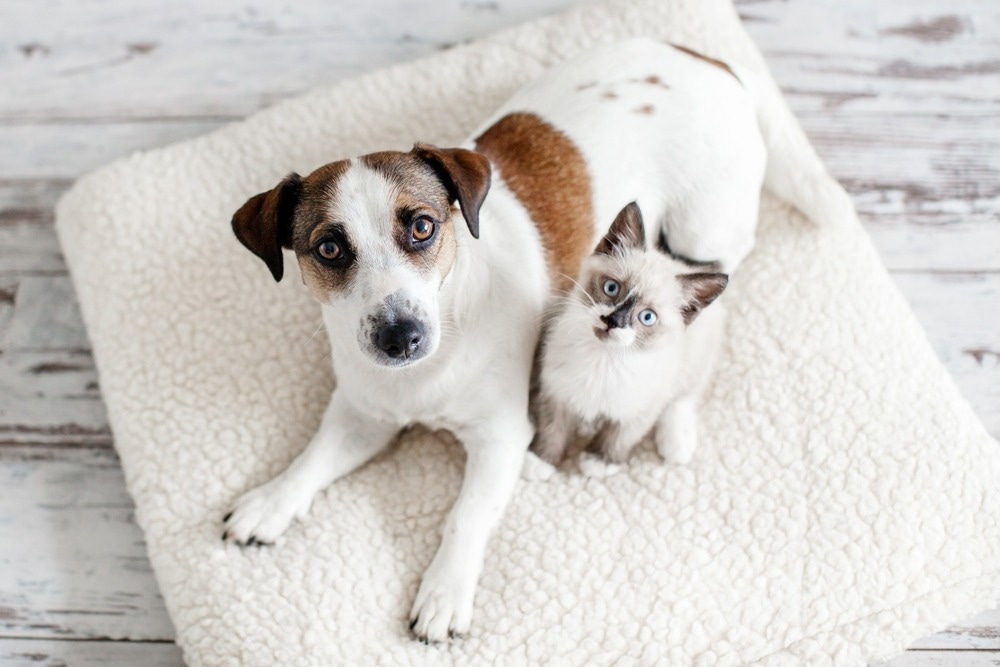In a recent study published in Eurosurveillance, researchers performed assessed the risk of reverse transmission of the monkeypox (MPX) virus (MPXV) of clade IIb or the West African clade from humans to animals in the United Kingdom (UK).

Background
The current 2022 MPXV outbreak has raised health concerns globally, with a rapid upsurge in MPX cases among humans due to zoonotic MPXV transmission. Studies have also documented reverse MPXV transmission from humans to animals in France and Brazil. Other domestic animals may also be at risk of MPX; therefore, the topic of reverse MPXV transmission requires further research.
In May 2022, as a component of the UK’s responses to the May 2022 MPXV outbreak, risks of zoonotic transmission were reviewed by HAIRS (human-animal infections and risk surveillance group). For MPXV-susceptible non-rodent pet animals, HAIRS recommended risk management precautions, such as moving pets from infected individuals’ households for the time being during the recommended three-week quarantine period on the basis of the MPXV incubation period in humans.
In the early MPXC outbreak phase (i.e., between June 1st, 2022, and July 7th, 2022), as a component of routinely conducted UKHSA surveillance efforts, humans were asked explicitly about the type and number of pets, and the information obtained was passed to the APHA.
About the study
In the present study, researchers determined the risk of human to animal MPXV transmission in the UK based on the HAIRS assessment findings.
The present study was conducted between June 1st and September 16th, 2022, on pet animals living in households with confirmed human monkeypox (MPX) cases, as informed to the APHA (animal and plant health agency) by UKHSA (the UK health security agency), private veterinarian or owners.
APHA could advise and liaise with the pet owner’s privately practicing veterinarian doctors to undertake appropriate assessments of animals with clinical symptoms indicative of potential MPXV infections. If infections could not be ruled out, APHA could arrange for MPX diagnostic tests. If MPXV infections were required confirmations among mammalian pets, the World Organisation for Animal Health would be informed accordingly by DEFRA (UK department for environment, food, and rural affairs).
UKHSA HPTs (health protection teams) provided the MPXV-infected cases and their household contacts with advice for MPX prevention, and the veterinarian doctors could connect with the APHA after MPX-infected individual diagnosis for advice on animals if the infected case individual had concerns regarding their pets.
Considering the increasing human MPX case counts, from July 7th, 2022, all MPX case indiviudals were asked to self-report household pet data through UKHSA questionnaires. The individuals were consequently and electronically provided APHA guidance, including data on veterinary care accessibility and pet illness within three weeks of pet exposure to MPV-infected and infectious individuals.
Results and future implications
In total, 154 pet animals (including 42 dogs and 26 cats) from 40 households with confirmed MPXV-infected individuals were reported by HPTs to the UK’s Animal and Plant Health agency, and none of the animals with clinical presentation of MPX were identified. The three-and-a-half month surveillance data and the May 22nd observations showed no positive cases of pets with clinical presentations indicative of MPX in association with confirmed MPX cases in humans that were informed to the APHA ever since the MPXV outbreak commenced in the UK till September 16th, 2022.
Overall, the study findings showed a low risk of MPXV transmission to household pets from MPXV-infected individuals. The findings could guide pet care during the infectious period of human MPXV cases, such as quarantining and aid in ascertaining if the animal showed clinical signs of MPX to enable prompt diagnosis and appropriate treatment of the pet animals.
If MPXV was to spill over into peri-domestic rodents living in the UK, this could result in endemic foci for subsequent zoonotic transmission (and transmission to domesticated animals that could then infect their owners). The authors have indicated that the estimated risks may be underestimated due to the under-reporting of human-to-animal MPXV transmission risks and non-disclosure of pet ownership due to pet quarantine recommendations.
Further, animal MPX cases may have gone undetected since MPX symptoms may differ among humans and animals, and advice provided to pet owners has primarily been based on human MPX symptoms. Studies have also documented asymptomatic MPXV transmission in humans. Further research must assess the clinical profiles of animal MPX cases and the subclinical MPXV infection and transmission potential among non-human species.
- Shepherd, W. et al. (2022) "The risk of reverse zoonotic transmission to pet animals during the current global monkeypox outbreak, United Kingdom, June to mid-September 2022", Eurosurveillance, 27(39). doi: 10.2807/1560-7917.es.2022.27.39.2200758. https://www.eurosurveillance.org/content/10.2807/1560-7917.ES.2022.27.39.2200758
Posted in: Medical Science News | Medical Research News | Disease/Infection News
Tags: Diagnostic, Food, Monkeypox, Research, Veterinary, Virus

Written by
Pooja Toshniwal Paharia
Dr. based clinical-radiological diagnosis and management of oral lesions and conditions and associated maxillofacial disorders.
Source: Read Full Article
